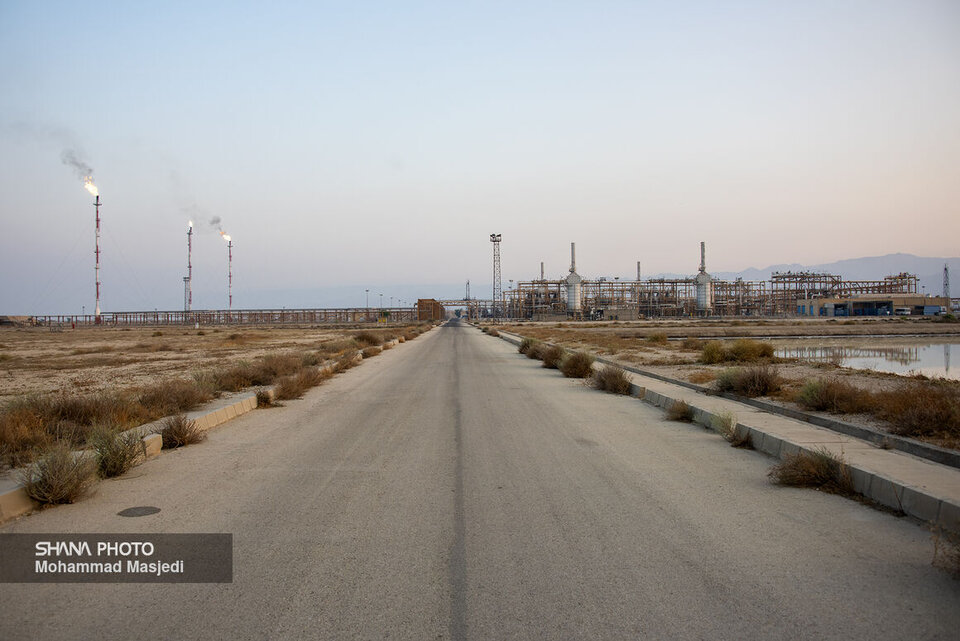Upon completion by the end of the Iranian year 1404 (March 2026), gas flaring is expected to drop below 5 million cubic meters per day.
Sakhavat Asadi, during a meeting with members of the Special Committee for Production Surge and Oversight of General Policies of Article 44 of the Islamic Parlianent, noted that the Pars Special Economic Zone, spanning 54,000 hectares, is the largest of its kind in Iran.
He explained that the zone operates in two areas: Pars One (Asaluyeh) and Pars Two (Kangan), while development in Pars Three (North Pars), including the Golshan, Ferdows, and Farzad fields, has yet to begin.
Asadi mentioned that in Pars One, eight refineries and 22 petrochemical plants are currently operational, while in Pars Two, five refineries are active, 12 petrochemical plants are under construction, and one is already producing.
The CEO stated that the South Pars gas field covers approximately 9,700 square kilometers, with one-third located in Iranian territory and about 6,000 square kilometers extending into Qatari waters. Iran currently leads Qatar in gas extraction from the field.
Asadi emphasized that the South Pars gas field holds 8% of the world’s gas reserves and 50% of Iran’s gas reserves. Currently, 70% of Iran’s gas production comes from this region, with a recent record of 716 million cubic meters of gas extracted daily from South Pars platforms.
He also reported daily production of over 710,000 barrels of gas condensates in South Pars, with 450,000 barrels transported daily via a 480-kilometer pipeline to the Persian Gulf Star Refinery in Bandar Abbas for gasoline production.
Gas condensate exports to halt for two years
Asadi noted that Iran’s gas production matched Qatar’s in 2017, and since then, Iran has surpassed its neighbor in daily production. However, Qatar’s cumulative extraction remains higher due to its earlier start in the field.
The CEO revealed that the National Iranian Oil Company has invested approximately $90 billion in the upstream sector of South Pars, both offshore and onshore. He added that establishing a new phase of South Pars now requires around $5.6 billion in investment. Before sanctions, domestic companies partnered with foreign firms, contributing about 30% of the work, but now 70% of Phase 14 equipment is domestically produced.
Asadi detailed that 39 platforms and 360 wells are located 110 kilometers into the Persian Gulf, with every 11 wells connected to a platform. Extracted gas is transported via 3,200 kilometers of pipelines to onshore refineries for processing.
The CEO outlined the output of a standard refinery, including 50 million cubic meters of methane, 2,750 tons of ethane, 1,100 tons of propane, 1,800 tons of butane, 75,000 barrels of gas condensates, and 400 tons of sulfur daily. These products are valued at $10 million daily, or $3.6 billion annually.
76,000 employed in Pars Special Economic Zone
Asadi stated that 76,000 permanent employees work in various companies within the zone, with an additional 15,000 to 20,000 workers employed in ongoing projects, depending on their progress. He noted challenges in hiring and payroll due to regulatory constraints.
The CEO highlighted that the Pars Special Economic Zone accounts for the majority of exports from Iran’s free and special zones, with 29 operational companies and three utilities. Currently, 42 projects, mostly petrochemical, are underway.
Petchem capacity in Pars Zone reaches 46m tons
Asadi reported that the petrochemical capacity in the region is 46 million tons, representing 48% of Iran’s total petrochemical capacity. If ongoing projects are completed, this capacity will increase by 44 million tons, reaching approximately 90 million tons.
The CEO mentioned that 34 projects worth $32 billion are under construction, including five petro-refining projects valued at $2.5 billion.
Asadi noted that gas flaring, previously between 12 and 13 million cubic meters daily, has been reduced to 8 million cubic meters. With the government’s focus on further reduction, the South Pars Gas Complex is working on a €200 million project, which is 60% complete in terms of equipment and parts procurement. Upon completion by the end of 1404, gas flaring is expected to fall below 5 million cubic meters daily.
The CEO also mentioned a recent auction for associated gas, with four companies winning bids to process methane for injection into the national grid and utilize other gases for various purposes.


Your Comment